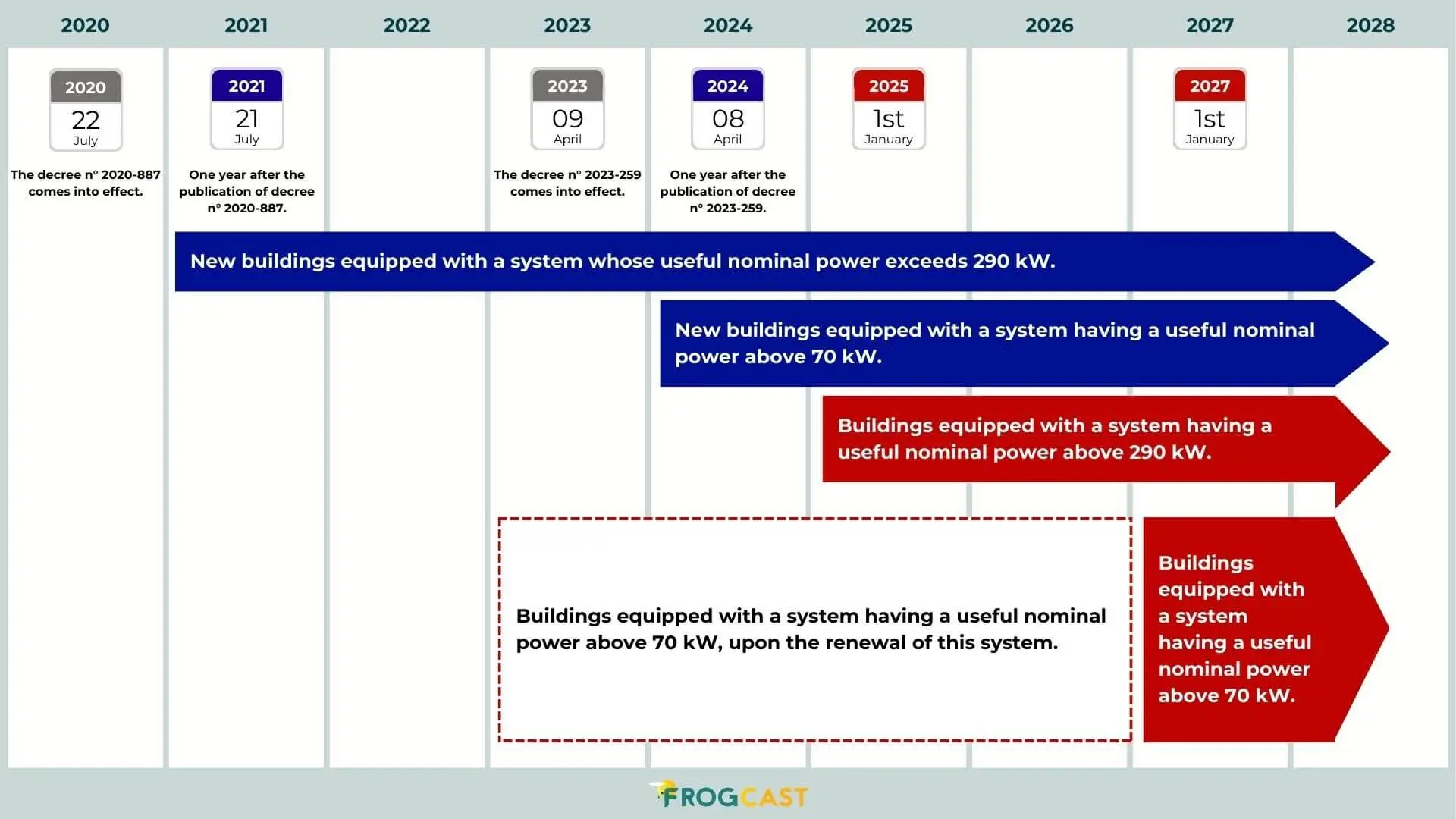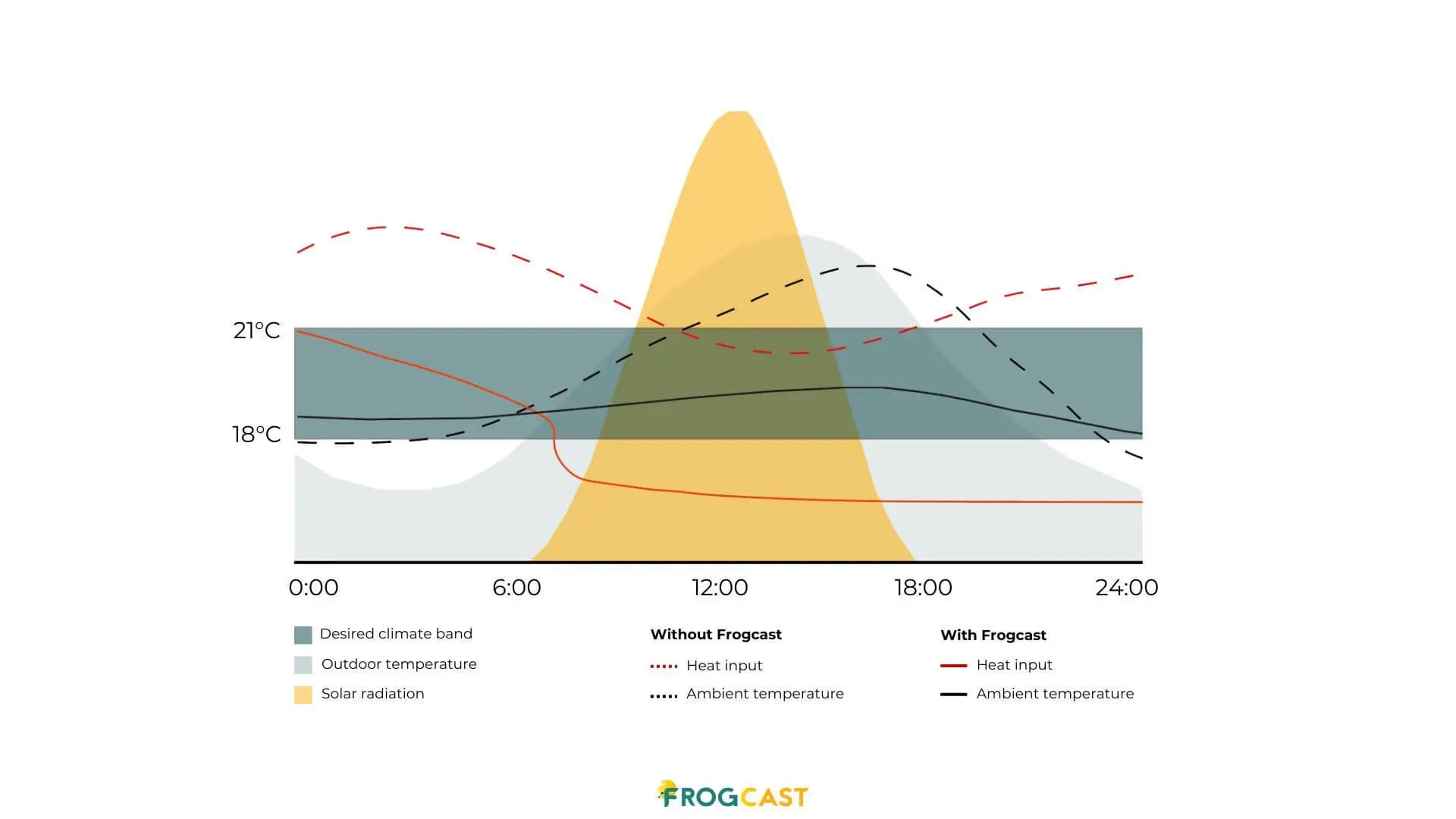Optimizing building energy efficiency: The comprehensive guide to Building Management Systems (BMS)
null
Building
01/02/2024
by
Matthieu Laurent
15 min
BMS and CTM: Explained
null
BMS: A Building Management System (BMS) is a computerized system integrating virtual or physical sensors and controllers, enabling monitoring, optimization, and remote control of all technical equipment in a building, divided into different systems, therefore contributing to its efficient management.
Examples of technical equipment systems include:
HVAC (Heating, Ventilation, Air Conditioning)
➡️ Lighting
➡️ Electricity
➡️ Security Systems
➡️ Blinds and Shutters
➡️ Etc.
CTM: A centralized technical management (CTM) is a computerized system that centralizes and coordinates the control of specific technical equipment in a building, thus offering centralized and efficient management of these systems. The CTM controls the technical equipment of a single system only. For example, only the management of security systems.
CTM thus has a more specific approach than BMS, focusing on a single system, while BMS encompasses all systems, providing an overview.
CTM can be considered as a component of BMS. In the case of a large building, multiple CTMs can operate simultaneously, each handling technical equipment of a specific system. BMS, on the other hand, oversees the general supervision, coordinating and aligning the various actions of the different CTMs.
null
What are the benefits of BMS and CTM?
null
➡️ Energy efficiency: Promotes eco-friendly practices, contributing to reduced consumption and cost savings.
➡️ Sustainable performance: Together, BMS and CTM contribute to a more efficient and sustainable operation of building installations.
➡️ Improved safety: Continuous monitoring of security systems by BMS and CTM enhances building protection.
➡️ Occupant comfort: Enhances comfort by allowing more precise control of environmental conditions, such as temperature and lighting.
➡️ Reduced operating costs: Contributes to operational savings by optimizing the use of energy resources and minimizing waste.
➡️ Reduced maintenance costs: Facilitates preventive maintenance, therefore reducing costs associated with unforeseen repairs and unplanned downtime.
null
The BACS Decree
Definition
The BACS Decree (Building Automation & Control Systems), dated July 20, 2020, defines the modalities for achieving the energy consumption reduction objectives set by the tertiary decree. This regulation requires the implementation of a building automation and control system, no later than January 1, 2025.
null
null
Objectives of the BACS Decree:
➡️ Monitor, record, and analyze energy consumption data.
➡️ Adjust the consumption of technical systems in real-time according to needs.
➡️ Detect and alert operation managers of potential consumption drifts, upstream of malfunctions, to avoid overconsumption and additional maintenance costs.
null
null
Deadlines of the BACS Decree:
The deadlines depend on the nominal power of heating or cooling systems and the age of the buildings:
➡️ Existing tertiary buildings (power ≥ 290 kW): BMS mandatory by January 1, 2025.
➡️ Existing tertiary buildings (power ≥ 70 kW): BMS mandatory by January 1, 2027.
➡️ New tertiary buildings (permit after July 21, 2021, power > 290 kW): immediate obligation.
➡️ New tertiary buildings (permit filed in 2024, power > 70 kW): obligation starting in 2024.

Timeline: Key dates of the BACS Decree (source: BACS Decree Guide, Ministry of Ecological Transition).
The different performance classes of BMS
null
The standard NF EN ISO 52120-1:2022 defines functions related to automation, regulation, and technical management impacting the energy efficiency of buildings. These functions are categorized into four classes (A, B, C, and D) of BMS and encompass various uses such as heating, hot water, ventilation, air conditioning, lighting, blinds, etc.
Classes A, B, and C BMS share some common characteristics before differing in their respective profitability levels.
Class D BMS will not be addressed as they do not meet the energy objectives of the BACS Decree.
null
null
A common goal
Whether they are type A, B, or C, all building technical management systems (BMS) are designed to reduce energy consumption and CO2 emissions from the main building equipment: heating, air conditioning, lighting, and hot water production.
These 3 levels of efficiency guarantee a decrease in electricity bills ranging from -5% to -40%, depending on the selected control options.
Implementing a BMS system grants access to an EEC bonus, which varies depending on the BMS class; the higher the energy efficiency of your BMS, the higher the bonus.
Types A and B BMS require sensors for their operation, and it is possible to use both physical and virtual sensors.
For a BMS to be considered type A, it must be anticipatory, using algorithms and data, including weather forecasts, to predict future needs and building conditions. This can include aspects such as energy consumption, potential breakdowns, maintenance requirements, and other relevant parameters.
Type A BMS allows for better energy efficiency, reduced operational costs, proactive breakdown management, and optimization of building performance. It also enables more informed decision-making by anticipating future needs and automatically adjusting various equipment accordingly.

null
Application cases of BMS
Example on the heating equipment island, ambient temperature
Let's take the example of heating. We aim to maintain a temperature range between 18°C and 21°C (shaded zone). In the first scenario, we do not take into account the upcoming weather conditions throughout the day.
The ambient temperature (black dashed line) being below the desired temperature, the heating system will start with a significant heat input (red dashed line) to allow the ambient temperature to reach the desired values. Once the temperature threshold is reached, the heat input is reduced. The issue arises when there is a sharp increase in external temperature (light green), along with significant radiation (yellow). If these are not anticipated, at a certain point in the day, the indoor temperature exceeds the desired threshold, despite limiting the heat input. With the heat input still restricted and no anticipation of the nighttime temperature drop, the ambient temperature drops below 18°C, requiring another significant heat input.

Graph showing the difference in thermal management quality with and without weather forecasts.
null
null
It is evident that if we precisely anticipate the weather conditions (radiation + temperature), the heat input (red) can be smoothed throughout the day. This allows for energy and cost savings, but more importantly, it improves the inhabitant's comfort by maintaining the ambient temperature within the desired climatic range.
null
null
null
null
null
null
null
null
null
null
null
null
null
Start for free!
null
null
null
null
null
null
Follow the Frog
Through a simple and efficient API, Frogcast promises to make it easy for you to integrate reliable weather forecasts! Join Frogcast now by connecting your application directly to the API!







